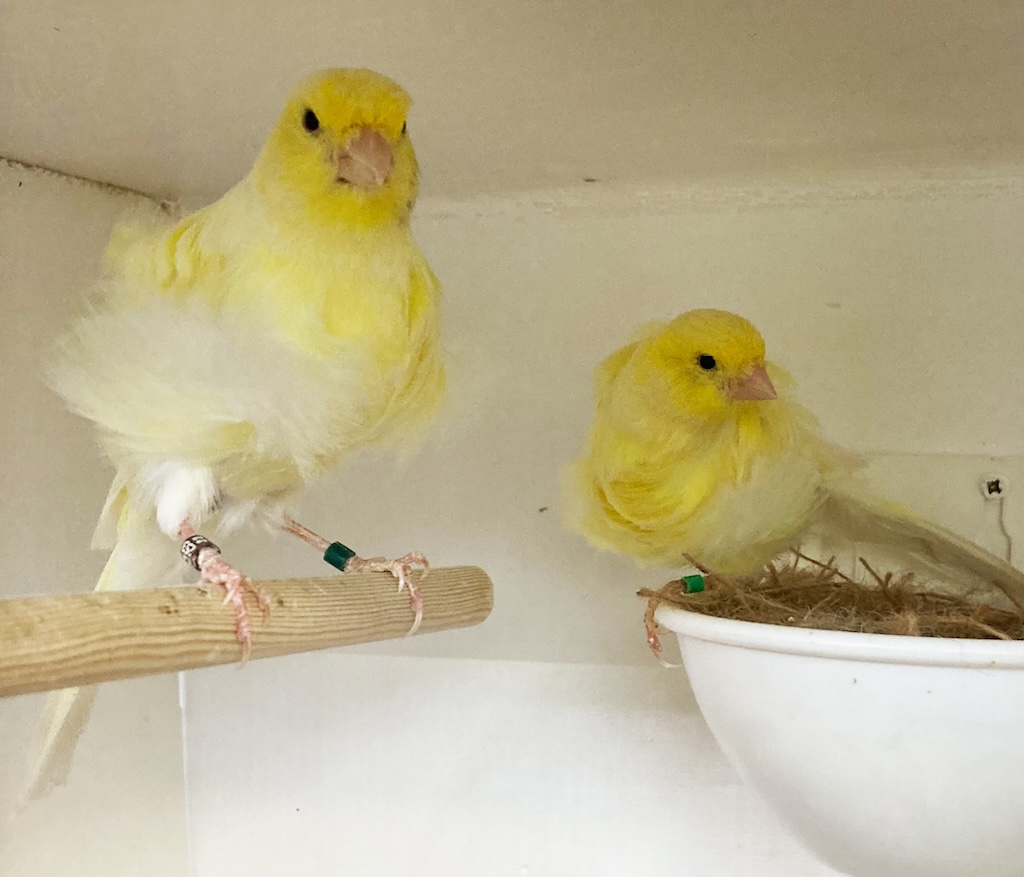It doesn’t half help when canaries breed in a co-ordinated way! Mind you, says VICKY BROWN, if the outcome is healthy youngsters, the timing’s not so important
THE day finally arrived, and the North frills were paired up. Well, when I say “day”… This year, pairing has shown itself to be a more gradual process. In previous recent seasons, the birds have all come into condition virtually together and, as a consequence, all the eggs appeared within a few days of each other. This had the great advantage that the eggs could all be set at the same time and to have 12 nests all hatching on the same day was a great aid to management.
We only make pairings when the birds appear to be physically ready. The cocks must be singing their hearts out and be free of any excess weight around the vent. As I write, a self blue that did well at the shows is showing signs of yellow fat around the back end and so we have put him on a plainer diet. Once the fat has been burned off, he will be ready to pair.
Hens need to have a very obvious swollen vent. That shows they are ready for egg-laying, and they must have been seen carrying nesting material around before they make it to the breeding cage and partner. This year a couple of hens have been a bit behind, either with vents on the way but not yet pronounced enough, or, in one case, she is clearly behind from the vast amount of weight she is carrying! Hens that are not ready will have another week or two in the flight and paired when they look right.
Treatment for all, no exceptions
But before we pair them up, all the birds are treated for mite and have their vent trimmed. In the case of our sideline, the Lancashires, every bird also has its tail trimmed and – in the case of coppies – a crest-snip to ensure full visibility.
On the subject of the Lancashires: as we suspected, virtually all the young birds that we bred last year were cocks. This therefore leaves us hanging our hopes on two old hens and a single young hen, although the young bird is not really of a standard we would want to use in normal circumstances. We had managed to bring in one plainhead hen, but she died within a week of her arrival, which was more than a bit frustrating.
At this moment, two hens are still in the getting-ready stage. The oldest had a cage to herself most of the winter, to ensure she could live as quietly as possible. By contrast, she is ready to go and was carrying material when introduced to our best young coppy. Sad to relate, the coppy was not impressed at all and in the end we separated them after witnessing the cock chasing the hen off several times.
After that experience she has been paired to an old coppy, who is the father of the first-choice cock bird. They seem to be content with each other and a fine nest has been built. If fertile eggs result we will probably foster the first round out to North frills. The hen, after all, is old and the burden of feeding chicks may be quite a strain.
Suddenly, lots of nests
Back with the North frills, the signs were good and, of the pairs introduced, 80 per cent had built a nest within a day or so of being paired. All but one used the nest-pan; the odd one opted for a nest on the floor. When this occurs, we try to encourage use of the pan by moving the nest from the floor to the pan! This usually works. If it doesn’t, we admit defeat and place the nest in a flat-bottomed clay nest-pan which sits firmly on the cage floor.
We’re now hoping that the first eggs will start to appear in about a week. These will be removed and reset after the fourth has been laid.
Vicky Brown and husband Dave are champion breeder/exhibitors of frill and Lancs canaries.
Find more news and articles like this on the Cage & Aviary Birds website. Subscribe to Cage & Aviary Birds magazine now.


